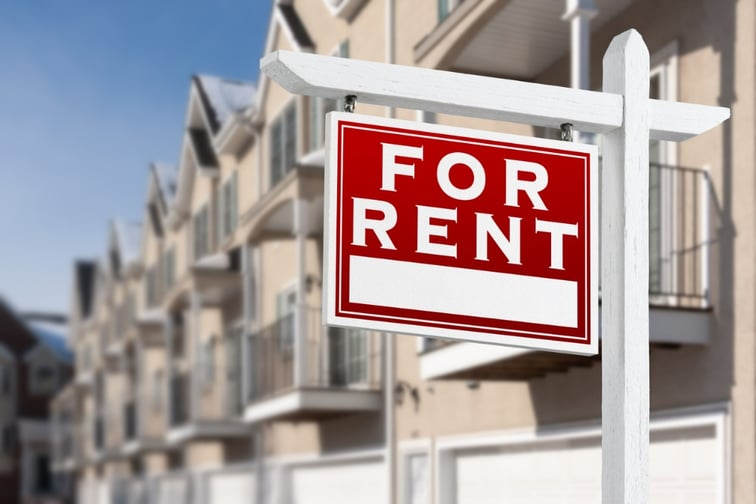

Affordability constraints appear to have slowed down the pace of rental growth as Australia’s rental market continues to tighten to record levels.
CoreLogic’s Quarterly Rental Review for Q3 2022 found the national rental index had its smallest monthly rise this year, up 0.6% in September and 2.3% over the September quarter, down from the 2.9% rise recorded over the June quarter and the 3% peak rate recorded in May.
Kaytlin Ezzy, CoreLogic research analyst and report author, said the annual growth trend in national rents held steady at record high 10% in August and September despite the slowdown in the monthly and quarterly rate of growth.
“The past few years has seen unprecedented growth in rental values,” Ezzy said. “We saw rents fall marginally over the first few months of COVID, but, since August 2020, national dwelling rents have surged almost 20%, equivalent to a weekly rent rise of approximately $90 per week. Initially driven by a reduction in the average household size, the continued upswing in values is likely now predominantly being driven by the strong return of overseas migration, coupled with extremely tight rental supply.”
Ezzy found the easing in rental growth a little surprising, particularly given such low vacancy rates.
“The slowdown in the rate of rental growth may suggest an increasing number of prospective tenants are starting to come up against affordability constraints,” she said. “As high non-discretionary inflation, along with increasing rents put additional stress on a renter’s balance sheet, it is likely a growing number of tenants look to reform larger households or find more affordable rental options in an attempt to reduce costs.”
Supply continues to be a key factor impacting rental markets, with the total supply of advertised rental stock down by -35.4% than the previous five-year average.
The September quarter saw the lowest national vacancy on record, with national dwelling vacancy rates dropping from 1.3% in June to 1.1% in the recent quarter.
“One factor which has likely negatively impacted rental supply is the decline in investor purchasing activity between early 2017 and early 2020,” Ezzy said. “Through this period, a mix of temporary changes to mortgage lending conditions, and the uncertainty surrounding the onset of COVID-19 limited residential property purchases. Additionally, CoreLogic recorded an increase in investor-owned housing stock being listed for sale through 2021 and into 2022, with many investors possibly looking to maximise capital gains through the upswing.”
The CoreLogic report also showed that rental growth across the combined capitals continued to outpace rent rises across the combined regions, due mostly to the return of overseas migrants, who typically opt to rent in the high-density markets of Sydney and Melbourne upon arrival.
Over the three months to September, rental growth in the combined capitals increased 2.7% compared to 1.3% across the regions.
“While both markets saw the pace of quarterly growth ease compared to the June quarter, the decline in the rate of growth seen across the combined regional markets was significantly stronger,” Ezzy said. “However, despite the easing growth trend, rental availability in both markets remains extremely tight, with the capitals recording a monthly vacancy rate of 1.1%, while just 1.0% of regional rental properties were observed as vacant in September.”
Of the capital cities, Brisbane recorded the strongest quarterly rise in dwelling rents with 3.8%. This was despite the pace of growth easing from the recent peak rate of growth of 4.2% recorded over the three months to August.
Adelaide and Darwin both saw a 3.6% lift in rental values of over the quarter, while Sydney, Perth, and Melbourne, saw dwelling rents increase 2.9%, 2.5%, and 2.3%, respectively.
In Hobart, rental values rose 0.4%, an increase on the 0.1% rise recorded over the three months to August.
Canberra was the exception, with dwelling rents falling -0.4% in the September quarter due to a -0.9% drop in house rents.
Despite recent declines, Canberra retained its position as Australia’s most expensive capital city rental market, with a median weekly rental value of $682. This was followed by Sydney ($665), Darwin ($590), and Brisbane ($573).
Melbourne, on the other hand, maintained its position as the most affordable capital to rent in ($495 per week). This was followed by Adelaide ($508), Perth ($533) and Hobart ($551).
“With Sydney recording strong rental growth at a time when rents are declining across Canberra, the gap between Australia’s two most expensive rental markets has narrowed to just $17 per week,” Ezzy said. “Given international migration is expected to continue to support rental demand across Sydney while affordability is expected to hamper Canberra’s rental growth, it’s likely we’ll see Sydney overtake Canberra as Australia’s most expensive capital city rental market in the coming months.”
Gross rental yields continued to expand, with rental values rising as housing values depreciated. Over the September quarter, national dwelling values slumped -4.1% while national dwelling rental values jumped 2.3%, which led to an increase in dwelling yields of 24 basis points to 3.57%.
While yields are above the record lows recorded in February (3.21%), they are still well below the pre-pandemic decade average of 4.24%.
“With interest rates expected to continue rising throughout the first half of 2023, it’s likely we’ll see further downwards pressure on housing values,” Ezzy said. “In this scenario, it is likely rental yields will continue to improve with the combination of continued rental growth and falling values being a potential catalyst for national dwelling yields to return to long-term averages, which could help offset the highest mortgage costs investors are facing. Once interest rates have stabilised, higher yields coupled with lower values and stronger buying conditions, could entice more investors to enter the market, which would ultimately help raise rental supply.”
